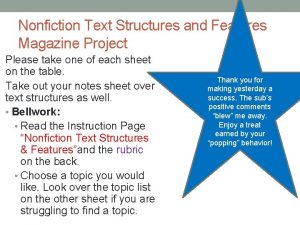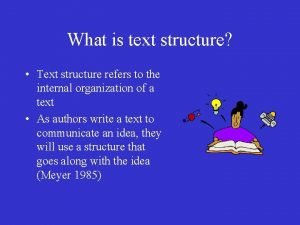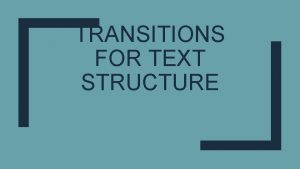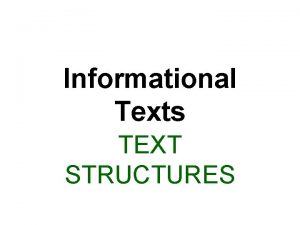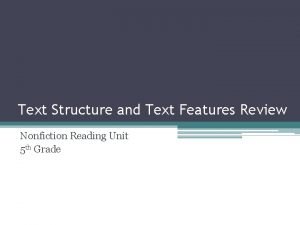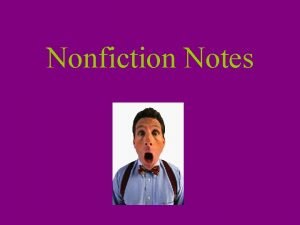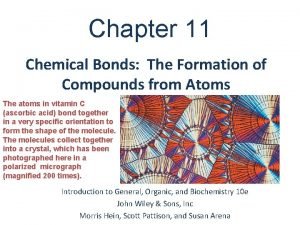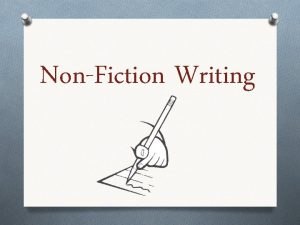NonFiction Nonfiction Text Structures English 10 Common Forms










- Slides: 10

Non-Fiction: Nonfiction & Text Structures English 10

Common Forms of Nonfiction Letters and Journals/Diaries Biographies The writer’s record of experiences of his/her own life Informational/Website The writer’s account of his/her own life Memoirs The life story of someone written by another person Autobiographies Contains personal thoughts and reflections Recently recognized as Nonfiction, these websites provide facts about a variety of topics, usually in an unbiased way Speeches Usually given by reputable experts of famous people

Definition of Nonfiction is… Text that is not fictional, designed primarily to explain, argue, instruct or describe, rather than entertain. For the most part, its emphasis is factual Usually based on real facts and information about people, places, ideas, and experiences

Five Main Purposes of Nonfiction are… To To To entertain inform or explain reflect describe persuade

Non-Fiction Text Structures 1. Description or Listing 2. Sequence (Time Order or Chronological) 3. Compare and Contrast 4. Cause and Effect 5. Problem and Solution/Question and Answer

Description or Listing Provides information, such as facts and characteristics about a subject, event, person, or concept; most common pattern found in textbooks Transitions: o o o o First, second, etc Above, at, below For example, for instance In addition, moreover Furthermore In other words Finally, during, after Detail Main Idea/Topic Detail

Sequence or Time Order (Chronological) Shows a series of events that take place in time order; traces the sequence or the steps in the process Transitions o First, second, etc o Next, again o Primarily, finally o Additionally o First and foremost o The former, the latter

Compare and Contrast Delineates the similarities and/or differences between two or more subjects HOW TO DO IT: First compare; then contrast (or vice versa – depending on what point you want to make) First write about one idea, then another, and compare and contrast within those ideas Write only about the comparable and contrastable elements of each idea Only compare or only contrast Signal Words: o On the other hand, although, but, likewise, both

Cause and Effect Shows why something exists or is in place, to tell what happens as the result of an action or actions, to show one or more causes led to one or more effects CAUSE EFFECT Signal Words: o Because o Thus o For this reason o In order to o If…then

Problem and Solution/ Question and Answer Shows a problem or question and offers a solution or answer to an issue A problem can be between individuals or groups, or it might be with something that is going on in the world. A problem might even occur with just one person Signal Words: o The problem o Resolved o The solution Problem Solution
 Structure of a magazine article
Structure of a magazine article Text-to-media connection
Text-to-media connection Text structure refers to
Text structure refers to Text structure transition words
Text structure transition words Text _____ in a nonfiction text is its organization.
Text _____ in a nonfiction text is its organization. Text features
Text features N'to genre
N'to genre What is nonfiction
What is nonfiction Homologous structures definition
Homologous structures definition Common molecular structures
Common molecular structures Market structure from most competitive to least competitive
Market structure from most competitive to least competitive
